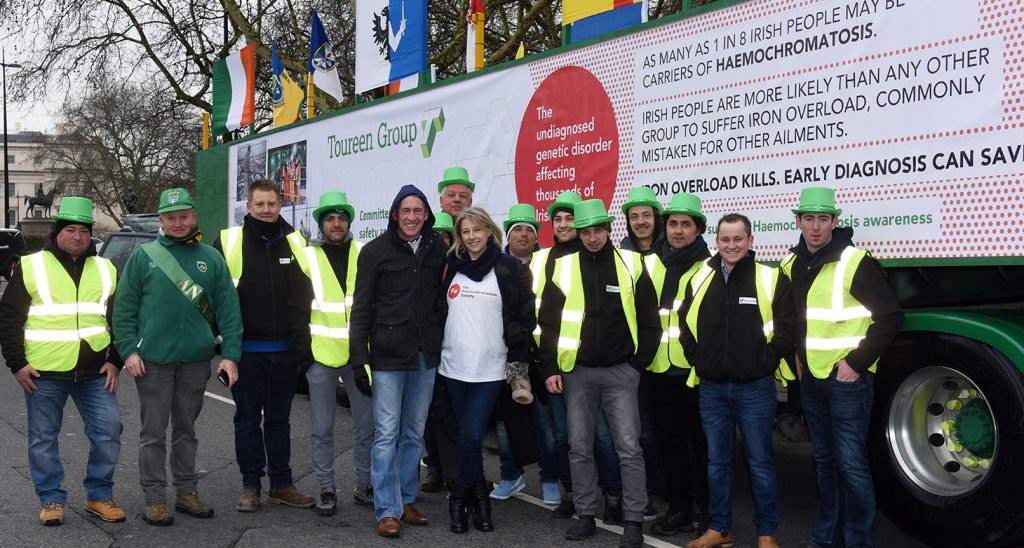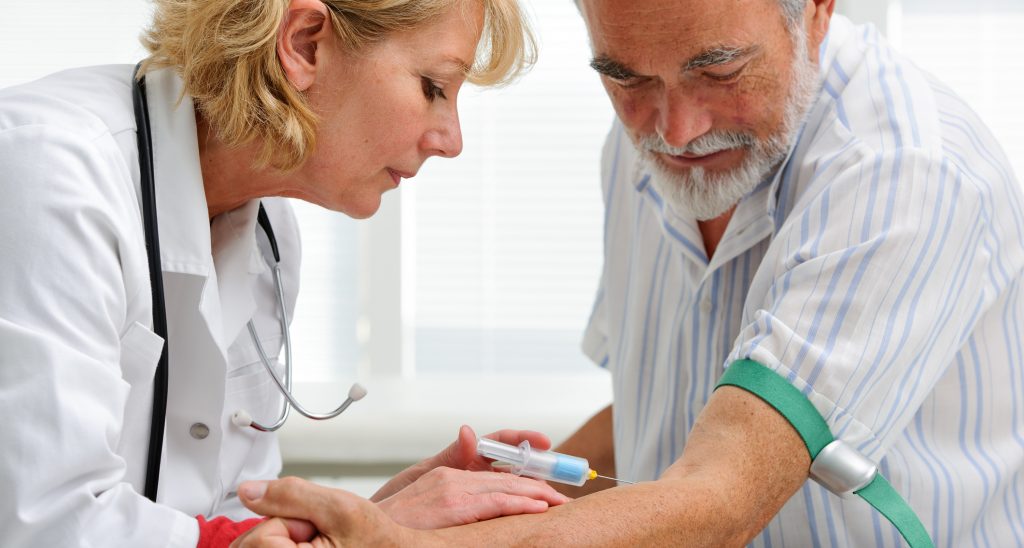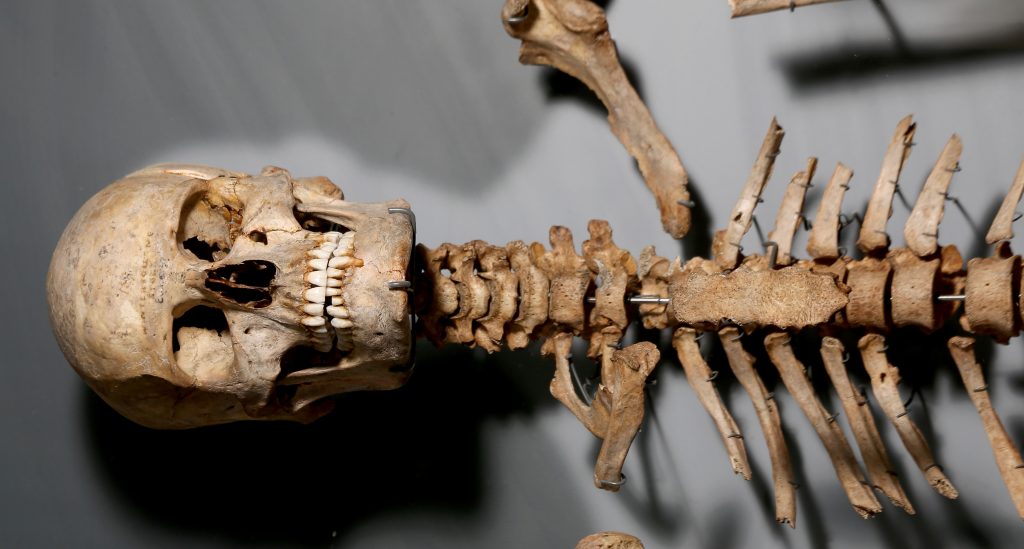AN Irish company is the driving force behind a new campaign to raise awareness of a potentially deadly condition that affects people of Celtic origin.
Haemochromatosis, a genetic disease, is believed to be carried by one in five Irish people.
In Europe as a whole, as many as one in 300 have the potential to develop the condition, according to the Irish in Britain organisation.
Those of Irish heritage are more likely than any other ethnic group to carry the gene that leads to haemochromatosis - an overload of iron in the body.
Avoiding iron-rich foods and alcohol and removing blood through venesection or phlebotomy are effective ways to treat hereditary Haemochromatosis.
While most people can be kept stable by removing a unit of blood every two to three months.
But, if iron is left to build up in the body it can become toxic to the organs and if left untreated can have serious effects on the heart and liver and cause diabetes and arthritis.
Yet, despite its potentially lethal consequences, the condition remains relatively undiagnosed in Britain and Ireland – something the Toureen Group want to see change.
 The Toureen Group launched their awareness campaign at the London St Patrick's Day parade in March (Picture: Malcolm McNally)
The Toureen Group launched their awareness campaign at the London St Patrick's Day parade in March (Picture: Malcolm McNally)Toureen, owned and founded by Kerryman Denis Nolan in London, have employed the services of an occupational nurse who comes in one day a week to meet with its 600-strong workforce.
The Directors of the company were prompted to take action after they realised that members of their own extended family could have been affected by Haemochromatosis in the past.
“Denis became aware of how serious it could be and started talking to all the site teams about it,” says Toureen Group Director Dan Nolan. “That prompted some of the guys to undertake the test and a couple came back with positive diagnoses.
"We are saying to our workforce and to the wider community that they need to be aware of the symptoms and to spread the message.
"We’re aware that men can be quite stoic - and particularly Irish men and so we’re encouraging them to go off and get tested where necessary.
“We’ve now tried to step it up, we’ve met with the Haemochromatosis Society and we’ve asked how we can help each other.”
Corrina Towers is the newly-appointed Chair of The Haemochromatosis Society, which is headquartered in Rugby.
“Haemochromatosis is, we believe, the most common genetic disorder in the western world, but it’s largely the one that people have never heard of,” she says. “We know that it’s hugely underdiagnosed.”
Ms Towers, whose grandfather was from Dublin and grandmother from Donegal, was herself diagnosed with the condition – but only after suffering from extreme fatigue and stomach problems for almost 30 years.
“Haemochromatosis, it’s an iron overload condition. If the metabolic mechanism in your body is working normally it actually prevents iron consumed in the diet entering the system.
"The body very cleverly works out how much is needed and then literally puts the brakes on.
“If you have Haemochromatosis that mechanism in your body is not working properly.”
Researchers around the world are currently trying to find out exactly why the condition occurs and who’s most likely to be affected.
But studies to date have been mixed with differing medical opinions over what mutations actually constitute a person having Haemochromatosis or not.
“What’s actually happening, the iron that’s being over-absorbed, is begins to store in organs and tissues,” Ms Towers says.
“It starts to cause things like arthritis problems in joints, it starts to cause stomach problems in the intestine, it starts to cause diabetes in the pancreas,” she explains.
“It’s affecting all of these different organs in different ways and the real sad thing is that people present themselves at the doctors and quite often it’s being passed off as ageing.
“We think that within the medical profession, younger doctors coming through have it in their training but to some extent they’re trained from textbooks on what classically you might see from Haemochromatosis.”
A classic symptom, for example, of the condition is the appearance of a permanent suntan.
“They’re literally going rusty on the inside,” Ms Towers says. “And classically, doctors are trained to look at both hands.
"One of the places the iron accumulates and causes deformity is the joints of the first two fingers - so they kind of call it an iron fist, where those fingers become exaggerated.”
The good news is that there is a relatively simple test – a SF test (serum ferritin) - that can be carried out by a GP to see if someone carries the mutated gene.
“It’s not ordered routinely, it’s relatively inexpensive we believe - the price seems to range but costs less than a pound for the test,” Ms Towers says.
“If it were routinely ordered, we know people would be picked up as having high ferritin, one of the markers, and that could be looked into. Not everyone who has high ferritin will ultimately have Haemochromatosis, but that’s the starting point.
“If your doctor is checking your cholesterol and blood sugar levels in your blood, they would simply tick another box on the form and have a third element tested, which is this ferritin level.”
The origins of the genetic condition can be traced back thousands of years to Ireland.
In 2015 a geneticist from Trinity College Dublin discovered a mutation in two ancient people – a Bronze Age man and a Neolithic woman who lived around 5,000 years ago in what is now Ballynahatty in Co. Down.
The woman was found to have a variant of the gene responsible for Haemochromatosis, while the man had a different form linked to a more severe version of the disease.
“There’s a long way for us to go to make the public aware,” Ms Towers says. “Everyone has heard of iron deficiency, even if people don’t know that’s called anaemia, people know you can be deficient of iron but they don’t realise that the opposite is also true.
“A big symptom of iron deficiency is fatigue and tiredness, while a big symptom of iron overload is also fatigue and tiredness so what we find is - and this was my personal story - a lot of people either assume they need iron tablets or they are sometimes recommended or prescribed iron tablets.”
The Haemochromatosis Society is currently working with the University of Surrey on a ground-breaking report due to be launched at the House of Commons in October.
“The report won’t necessarily give us answers but it will give us some statistical data that will be very powerful and throw up a whole load of questions,” she says.
The Society will launch its own campaign around the release of the report and plans to lobby Westminster and the NHS for better diagnosis.
“Early diagnosis saves lives – that’s a very powerful message for us. Early diagnosis saves lives, suffering and money - that’s the real truth of it.”
The genetic aspect of the condition was only discovered in 1996 and according to the Society there is still not enough research available.
The Toureen Group hope their year-long campaign will help fund vital life-saving research and raise awareness of the condition.
“It appears the medical profession aren’t that familiar with it and have other priorities, so unless people from the Irish community take the lead and raise its prominence it’s likely most people are going to suffer this for the next 10-20 years,” says Dan Nolan.
“We probably all have lost relatives prematurely to Haemochromatosis and yet none of us would have been aware.
In many situations the symptoms were wrongly judged to have been caused by excessive alcohol consumption.
“From our experience and from speaking with others, it appears that the medical profession are also playing catch up and you can get mixed messages about the value in being tested.
"People had told me it was difficult to be diagnosed and I was surprised to find that was the case. I went to my doctor and I really had to petition quite hard to get the test - it is a constant battle.
“We’re telling our people to be very alert to it and to be steadfast when it comes to speaking to your doctor. If caught early enough it is treatable, the issue is if it’s not been detected in time.”
In order to help raise awareness of the condition the Harrow-based firm have pledged to run a year-long campaign – something they kick-started at this year’s London St Patrick’s Day parade with a huge float.
They are also are currently in talks to host a Contractors’ Cup this summer.
The sporting event will bring together GAA and soccer teams from the city’s Irish construction firms with the overall goal being to raise funds for the charity.
“We’re fortunate in London that the people running Irish construction companies are like-minded and supportive of initiatives to help the community, which is to be admired,” he adds.
“Sporting events are particularly useful to promote the message to younger people, who can then take that message back to their families and other members of their community.
“It’s not our not campaign alone, but it’s something we’re keen to support and if anyone else has ideas and ways to create awareness then they should get in touch.”




